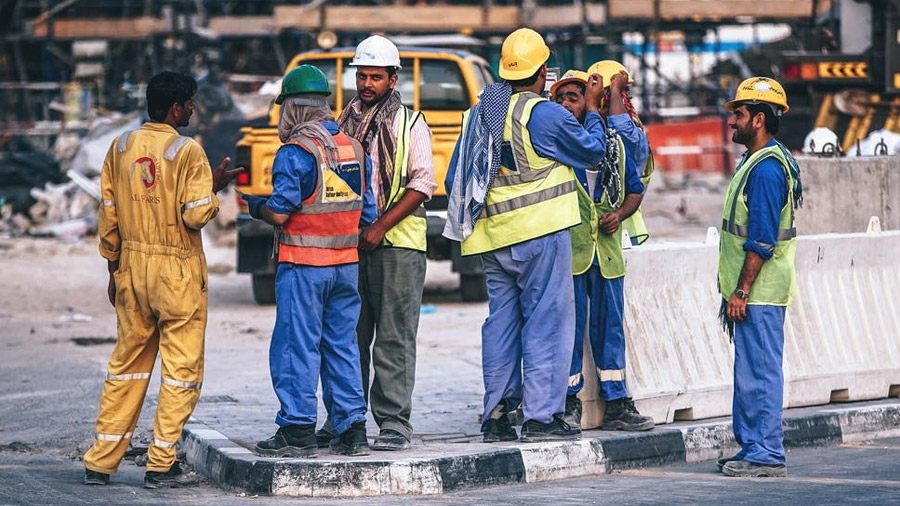EU Member States to Offer Visas for Workers from Belt and Road Countries?

Op/Ed by Chris Devonshire-Ellis
It seems it’s not just China that has its eyes on the Belt and Road as possessing assets. While China has been looking at hard assets in terms of securing supplies and trade, while funding infrastructure projects to obtain these, a new, softer asset is beginning to emerge – the realization in the West that the East has assets it needs too – its people.
While this is not a Belt and Road deal per se, the Czech Republic, an EU member facing a shortage of workers, and in particular, qualified technical specialists, has come up with a very specific visa program to attract this shortfall from India and the Ukraine. As an export oriented economy heavily engaged in manufacturing and industry, such workers are now in extreme demand in the country.
Accordingly, the desire to employ highly qualified workers from third (non-EU) countries has escalated over recent years, causing an influx of applications, all of which require extensive and burdensome administrative steps. Applications are known for taking extensive periods of time before an applicant is even scheduled for an appointment to lodge a visa application as there is no statutory period for scheduling an appointment. The notoriously slow and inefficient process in the Czech Republic has caused widespread frustration among prospective employers/employees.
As an immediate but partial solution to the predicament, the Czech government has introduced Project Ukraine and Project India (together “the Project”) which aims to substantially reduce the time before a visa application can be lodged for eligible applicants. Provided an applicant and their future Czech employer qualify for the Project, they (and any family members who also seek to move to the Czech Republic with them) will be scheduled for an appointment at the embassy to lodge their visa applications in advance of other applicants. Employee Card or Blue Card visa applicants as well as their family members who apply for long-term visas for family reasons will not be required to go through registration in the appointment reservation system as standard applicants.
The scale of the Project is capped at a maximum of 500 highly qualified workers from Ukraine and 500 from India per year. To be eligible, applicants have to be citizens of these countries and be highly qualified specialists in their fields.
Provided the above criteria is met, any employer who seeks to employ a highly qualified Indian or Ukrainian worker through the above accelerated process is eligible for the Project.
There are still EU protection caveats, for example, provided an EU candidate fulfills the given objective criteria for the position applies, the employer should prefer this EU candidate, unless there are justifiable reasons why such candidate does not fulfill the given requirements. The Project has been passed as a resolution of the Czech government and there is no legal right for the foreign workers and Czech based employers to participate in in it. However, the Project may provide, at least for some Czech entrepreneurs, a useful tool to fight the shortage of qualified workers on the national/European job market.
This scheme I foresee will be highly successful; both Ukraine and India possess high quality, well educated personnel, with the former especially already leaking employees out of the country due to massive corruption and war. India, meanwhile, has something of a fractured job market, discriminates against caste, and offers lower quality working conditions. The Czech Project is a brave attempt to solve labor shortages within the country. Provided the workers are protected from the unhappiness caused by the disastrous recent EU immigration policies, it is easy to see that such schemes may come into play and extend further into the Eurasian land mass.
About Us
Silk Road Briefing is produced by Dezan Shira & Associates. Chris Devonshire-Ellis is the practice Chairman. The firm has 26 years of China operations with offices throughout China, Asia and Europe. Please refer to our Belt & Road desk or visit our website at www.dezshira.com for further information.
 Related Reading:
Related Reading:
![]() China’s Soft Development Strategy for the Belt and Road Initiative
China’s Soft Development Strategy for the Belt and Road Initiative
![]() The EU Commission’s View of China and the Belt and Road Initiative – The Map
The EU Commission’s View of China and the Belt and Road Initiative – The Map
![]() Armenia’s North-South Highway Linking Europe with Iran, Dubai, and India
Armenia’s North-South Highway Linking Europe with Iran, Dubai, and India





